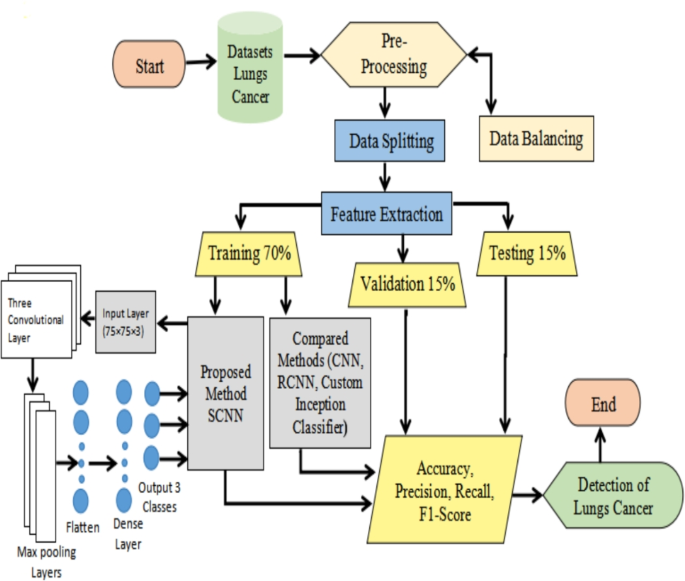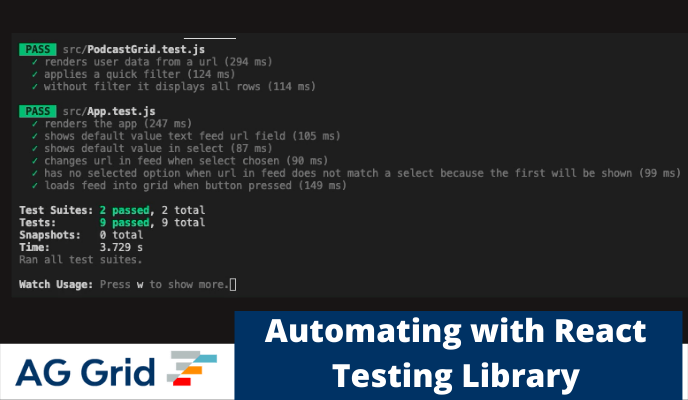The Shifting Tides of React Component Testing
In the ever-evolving landscape of front-end development, the tools we use are in a constant state of flux. For years, if you were testing React components, the conversation almost always started and ended with Enzyme. Created by Airbnb, it was the de facto standard, a powerful library that gave developers granular control to assert, manipulate, and traverse their components’ output. However, the latest Enzyme News is that its reign has effectively ended. The introduction of React Hooks and a fundamental shift in testing philosophy have paved the way for a new generation of tools that better align with modern application development.
This article explores the journey of React testing, from the dominance of Enzyme to the rise of user-centric libraries like React Testing Library. We’ll delve into Enzyme’s core concepts to understand why it was so popular, analyze the technical challenges it faced with the advent of functional components and Hooks, and provide a practical guide to the modern approach. Whether you’re maintaining a legacy codebase with thousands of Enzyme tests or starting a new project, understanding this evolution is crucial for writing effective, maintainable, and confident tests for your React applications. This is a key topic in recent React News and impacts anyone working with frameworks from Next.js News to Gatsby News.
Section 1: Understanding Enzyme’s Implementation-First Philosophy
To understand why the community moved on, we must first appreciate what made Enzyme so powerful and popular. Enzyme’s core philosophy was centered on testing the implementation details of a component. It provided utilities to render a component “in a vacuum” and then inspect its internal state, props, and lifecycle events. This was particularly well-suited for the era of class components, which had explicit state objects and lifecycle methods.
Enzyme offered three primary rendering methods:
shallow(): This was Enzyme’s flagship feature. It rendered only the component itself, without rendering its children. This allowed for true unit testing, isolating the component from the behavior of its dependencies. You could test that it passed the correct props to a child component without needing to worry about what that child component did.mount(): This method performed a full DOM render, including all child components. It was necessary for testing component lifecycle methods likecomponentDidMountor for tests that involved complex interactions between a parent and its children.render(): This method rendered the component to static HTML and analyzed the resulting structure. It was less about interaction and more about asserting the final HTML output.
A typical Enzyme test for a class component looked something like this. We would check if clicking a button correctly updated the component’s internal state.
// Counter.js (Class Component)
import React, { Component } from 'react';
export default class Counter extends Component {
constructor(props) {
super(props);
this.state = { count: 0 };
}
increment = () => {
this.setState({ count: this.state.count + 1 });
};
render() {
return (
<div>
<p>Count: {this.state.count}</p>
<button onClick={this.increment}>Increment</button>
</div>
);
}
}
// Counter.test.js (with Enzyme and Jest)
import React from 'react';
import { shallow } from 'enzyme';
import Counter from './Counter';
// Note: This requires configuring an Adapter for your React version
// e.g., import Adapter from '@wojtekmaj/enzyme-adapter-react-17';
// Enzyme.configure({ adapter: new Adapter() });
describe('<Counter />', () => {
it('increments the count when the button is clicked', () => {
const wrapper = shallow(<Counter />);
// Assert initial state
expect(wrapper.state('count')).toBe(0);
expect(wrapper.find('p').text()).toBe('Count: 0');
// Find the button and simulate a click
wrapper.find('button').simulate('click');
// Assert the new state and rendered output
expect(wrapper.state('count')).toBe(1);
expect(wrapper.find('p').text()).toBe('Count: 1');
});
});This test is tightly coupled to the component’s implementation. It knows about this.state, it knows there’s a p tag, and it uses Enzyme’s simulate API. For its time, this was revolutionary. But as we’ll see, this tight coupling became a significant liability. The latest Jest News and testing discussions often highlight the brittleness of this approach.

Section 2: The Cracks Appear: Enzyme in a World of Hooks
The release of React 16.8 in 2019, which introduced Hooks, was the turning point. Hooks allowed developers to use state and other React features in functional components, leading to a massive shift away from class components. This paradigm shift inadvertently broke Enzyme’s core model. The very things Enzyme was designed to test—this.state, this.props, and lifecycle methods—no longer existed in the same way.
Enzyme’s shallow rendering, its most popular feature, had immense difficulty with Hooks. For example, useEffect hooks, which are critical for side effects, would not run with shallow rendering by default. This forced developers into a difficult choice: either abandon `shallow` and use the much slower mount for all functional components, or find complex workarounds. The official support for new React versions also began to lag, creating uncertainty for teams.
Let’s rewrite our Counter component using Hooks and see how an Enzyme test might struggle.
// Counter.js (Functional Component with Hooks)
import React, { useState } from 'react';
export const Counter = () => {
const [count, setCount] = useState(0);
const increment = () => {
setCount(count + 1);
};
return (
<div>
<h1>Modern Counter</h1>
<p>Current count: {count}</p>
<button onClick={increment}>Increment</button>
</div>
);
};
// Counter.test.js (with Enzyme - showing the challenges)
import React from 'react';
import { mount } from 'enzyme'; // Note: Using mount, as shallow has issues with hooks
import { Counter } from './Counter';
describe('<Counter /> with Hooks', () => {
it('increments the count when the button is clicked', () => {
// We must use `mount` to ensure hooks behave correctly
const wrapper = mount(<Counter />);
// We can no longer access state directly with .state()
// We must check the rendered output
expect(wrapper.find('p').text()).toBe('Current count: 0');
// Find the button and simulate a click
wrapper.find('button').simulate('click');
// Enzyme doesn't automatically re-render with hook state changes in the same way.
// We need to call .update() to be sure we have the latest render.
wrapper.update();
// Assert the new rendered output
expect(wrapper.find('p').text()).toBe('Current count: 1');
});
});While this test works, it highlights the friction. We’ve lost the ability to check state directly, and we are forced to use the heavier mount API. This was a clear signal that a new testing philosophy was needed—one that didn’t care about the internal implementation but focused solely on the component’s behavior from a user’s perspective. This shift is central to current React Native News as well, with tools like Detox and React Testing Library’s native counterpart gaining traction.
Section 3: The Modern Approach: React Testing Library
React Testing Library (RTL) emerged with a fundamentally different philosophy that perfectly matched the new component paradigm. Its guiding principle is: “The more your tests resemble the way your software is used, the more confidence they can give you.”
Instead of accessing internal state or props, RTL encourages you to interact with your components as a user would. You find elements by the text they display, their accessibility labels, or their roles on the page. You fire real browser events, not simulated ones. This approach has several key advantages:
- Decoupling and Refactor-Proofing: Since tests don’t know about the implementation, you can refactor a component’s internals (e.g., switching from
useStatetouseReducer, a hot topic in Redux News and Zustand News) without breaking the tests, as long as the user-facing behavior remains the same. - Confidence: Testing from a user’s perspective gives you higher confidence that your application actually works. If a user can see the text “Count: 1” and click a button labeled “Increment,” your test should do the same.
- Accessibility by Default: RTL’s preferred queries (like
getByRole,getByLabelText) push you to write more accessible code. If your component is hard to test with RTL, it’s often a sign that it’s also inaccessible to users with assistive technologies.
Let’s test our functional Counter component again, this time using React Testing Library and its companion library, user-event.
// Counter.test.js (with React Testing Library)
import React from 'react';
import { render, screen } from '@testing-library/react';
import userEvent from '@testing-library/user-event';
import { Counter } from './Counter';
describe('<Counter /> with React Testing Library', () => {
it('increments the count when the button is clicked', async () => {
// The user-event setup is recommended for realistic browser interactions
const user = userEvent.setup();
// 1. Render the component into a virtual DOM
render(<Counter />);
// 2. Find elements the way a user would
// We look for a button with the accessible name "Increment"
const button = screen.getByRole('button', { name: /increment/i });
// Assert the initial state by checking what text is visible on the screen
expect(screen.getByText(/current count: 0/i)).toBeInTheDocument();
// 3. Interact with the element like a user
await user.click(button);
// 4. Assert the result of the interaction
// The test passes if the text "Current count: 1" is now visible
expect(screen.getByText(/current count: 1/i)).toBeInTheDocument();
});
});This test is clean, readable, and robust. It knows nothing about useState or what HTML tags were used. It only knows that there’s a button, it can be clicked, and the displayed text should update. This is the modern standard for component testing in the React ecosystem, and it’s why the latest React Testing Library News consistently focuses on improving user-centric assertions and interactions.
Section 4: Best Practices and Migrating Away from Enzyme
For teams with large, existing codebases, the idea of migrating from Enzyme can be daunting. The good news is that you don’t have to do it all at once. A pragmatic approach is the best path forward.
Migration Strategy

- New Code, New Tests: Mandate that all new components and features must be tested with React Testing Library.
- Refactor and Replace: When you refactor an old component or fix a bug in it, take the opportunity to migrate its corresponding Enzyme tests to RTL.
- Don’t Obsess Over 100% Conversion: It may not be worth the effort to convert stable, legacy tests that are unlikely to change. Focus your energy on the parts of the application that are actively being developed.
Modern Testing Best Practices
- Prioritize User-Centric Queries: Always try to query elements in this order of priority:
getByRole,getByLabelText,getByText. Avoid usingdata-testidunless absolutely necessary, as it’s an implementation detail that users don’t see. - Combine with E2E and Visual Tests: RTL is for unit and integration testing. Complement it with End-to-End testing tools like Cypress or Playwright for critical user flows. The latest Cypress News and Playwright News show powerful features for this. For visual consistency, use tools like Storybook News to perform visual regression testing.
- Test Behavior, Not Implementation: This is the golden rule. Before writing a test, ask yourself, “What is the user trying to accomplish?” not “What should this function return?”.
The philosophical difference can be seen in a single line of code. What was once an implementation-focused selector becomes a behavior-focused query.
// The Old Way (Enzyme)
// Fragile: Breaks if a designer changes the class name from 'btn-primary' to 'btn-main'
const button = wrapper.find('button.btn-primary');
// The Modern Way (React Testing Library)
// Robust: Works as long as there is a button with the visible name "Submit"
const button = screen.getByRole('button', { name: /submit/i });Conclusion: Embracing the Future of React Testing
Enzyme was a foundational tool that served the React community incredibly well for many years. It shaped how we thought about component testing and provided a robust framework during the era of class components. However, the latest Enzyme News is a story of technological succession. The paradigm shift initiated by React Hooks required a corresponding shift in our testing methodologies.
React Testing Library, with its focus on user behavior over implementation details, has proven to be a more resilient, confident, and maintainable way to test modern React applications. By writing tests that mirror user interactions, we not only build more robust software but also naturally create more accessible experiences. As you continue to build with the latest tools from the Vite News or manage complex state with libraries covered in Recoil News, remember to align your testing strategy with this modern, user-first philosophy. The era of testing implementation details is over; the era of testing user behavior is here to stay.












